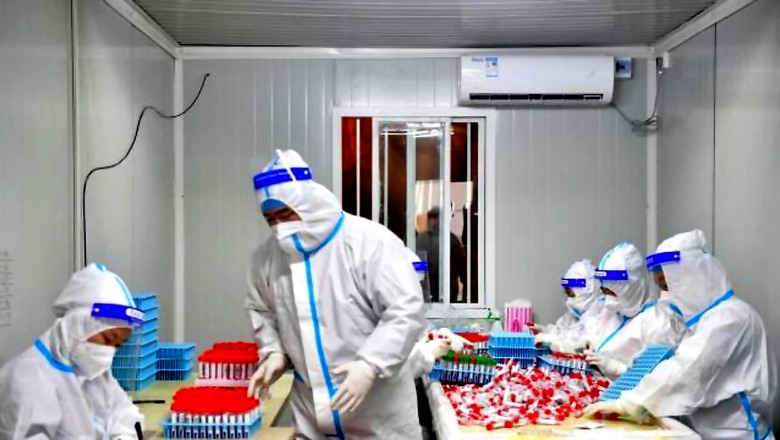
views
Seven samples tested positive for infection caused by the mycoplasma pneumoniae bacteria at AIIMS Delhi between April and September this year, while Singapore recorded the highest 172 cases in Asia, according to a global surveillance study published in The Lancet Microbe journal.
Mycoplasma pneumoniae has been linked to the recent surge in respiratory ailments among children in China.
In the first global prospective surveillance study of M pneumoniae initiated in April 2022, data were obtained from 45 sites in 24 countries from the four UN regions: Europe, Asia, the Americas, and Oceania.
Incidences of M pneumoniae as detected by polymerase chain reaction (PCR) tests were significantly higher in Europe and Asia than in America and Oceania and higher than those observed in previous testing periods in the same UN regions since the start of the prospective surveillance, the study found.
Overall, M pneumoniae was detected by PCR in 1,067 of 1,49 980 (1.49 lakh) tests during the 6-month period from April to September this year.
The most frequent detections in Europe were from Denmark (436), Sweden (145), Switzerland (132), Wales (49), and Slovenia (41), and in Asia from Singapore (172).
From a total of 67 tests conducted at AIIMS Delhi as part of the study, seven samples tested positive. Of these samples that tested positive, one case was detected through PCR test while six cases were detected through IgM Elisa test.
“These global prospective surveillance data show the re-emergence of M. pneumoniae in Europe and Asia more than three years after the introduction of COVID-19 pandemic restrictions,” the authors of the study noted.
“This delayed re-emergence is striking because it occurred long after non-pharmaceutical interventions (NPIs) were discontinued, and because it is, to our knowledge, a phenomenon unique to this pathogen,” they said.
Mycoplasma pneumoniae is a common cause of respiratory tract infections with community-acquired pneumonia as the major disease-related burden.
In March, 2020, the introduction of NPIs against COVID-19 resulted in an abrupt ending of these epidemics and a marked decline in M pneumoniae detection worldwide.
Compared to the pre-pandemic incidence of M pneumoniae, a significant reduction was observed in the first year after the implementation of NPIs similar to the incidence of other respiratory pathogens, the researchers said.
A further unprecedented, yet substantial, reduction in the incidence of M pneumoniae was observed in the second year, when other respiratory pathogens resurged as an indicator of community transmission, they added.
First data from this surveillance yielded a sustained very low incidence of M pneumoniae in the third year from April, 2022, to March, 2023.
However, though at very low levels, an increase in case numbers was noted in some countries in the last months of the third year (January to March, 2023), which subsequently warranted increased vigilance, the researchers said.
“In countries where M pneumoniae has re-emerged, case numbers are comparable to pre-pandemic (endemic) numbers. The further development of the re-emergence should be monitored to evaluate whether case numbers will escalate to epidemic levels or result in an exceptionally large wave of infections as was observed for the resurgence of other pathogens,” the authors noted.















Comments
0 comment